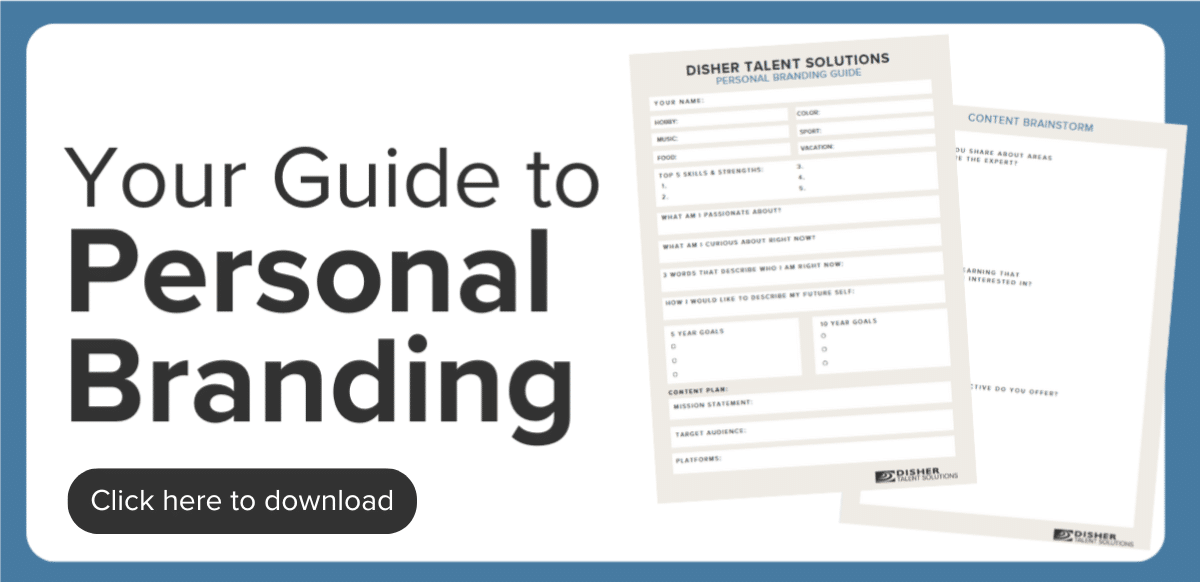
Creating a brand can feel like a giant undertaking, but at the core of it, a personal brand is simply others’ perception of you, your skills, your experiences, and your actions. Building a personal brand and sharing thought leadership can be a powerful strategy for expanding your network and establishing professional influence.
How to Build Your Personal Brand
We’ve identified four key steps to help you discover your brand, craft your message, and share it with your network.
1. Self-Discovery and Vision Mapping
The first step in branding a product is understanding and knowing your product. In personal branding, you are the product. You need to understand the skills, experiences, and goals you possess. Where are you right now? Where are you going?
For some, this might seem straightforward. You have a clear definition of your skills, and a straight path marked out in front of you. For others, it’s more complex. Either way, I’d encourage you to take the time to consider not just the role you’re currently in, but where you want to end up in your career and as a person. What do you want your legacy to be?
At DISHER, we use a process called vision mapping, a highly visual planning process that incorporates business strategy, product portfolio planning, and marketing direction. We’ve utilized those same principles to create a personal branding worksheet to help guide individuals through a personal vision map. This will help you assess your unique strengths, passions and values.

2. Craft Your Message
Once you’ve identified your strengths and career goals in the vision map, it’s time to create your message. It can be helpful to create a statement that epitomizes your experience and your brand, and how that will help you achieve your goals. Think of this as your personal mission statement.
It might sound something like “As an engineer, I will pioneer innovative product concepts that minimize environmental impact, promote sustainability, and inspire a greener future.”
This message will be a guide for what content you share and opportunities you pursue as you grow your brand. You want it to be specific enough to help guide you, but also timeless enough to use throughout your career.
3. Identify Your Audience and Platforms
Once you have a handle on what you want to focus on, you need to dig in to your who and where. Unfortunately, there isn’t a one-size-fits-all option for this. This is about finding your people.
If your goal is to create an environmentally conscious product, you want to find like-minded designers, suppliers, manufacturers, and consumers who are interested in, or could have a stake in, the same thing. It is helpful to narrow these down to a primary target audience and potentially a couple of secondary audiences.
Once you know who your audiences are, you need to understand where those audiences are connecting. Most professionals are currently utilizing LinkedIn to some extent for networking. Outside of that, there are forums like Substack, blogs, newsletters, networking events, and more.
A little research and a couple of key connections in your industry can help get you plugged in and on the right track to connect with your audience and platforms.
4. Developing Yourself and Your Brand
After you’ve done the work to identify your brand and who you’ll share it with, you can start to grow it.
Consistency is the key here. Create engaging professional content that shares your experiences, thought leadership, or opinions on topics affecting your audience. If you’re not yet an expert, get curious, ask your audience for their insights, or do your own research and report back. It’s not always about having all the answers, but about authenticity and connection with your network.
Remember: building a personal brand isn’t about crafting some idealized version of who you think you should be. It’s about who you actually are. Embrace your imperfections, be real, and pursue your goals—just take your connections along for the ride! Not only will you provide insight for others, but you’ll build an entire team of cheerleaders supporting you as you chase after your goals.
Stuck? We’re Here to Help
Building your personal brand can feel like a big task, but you don’t have to do it alone. Start by downloading our self-branding worksheet—it’s designed to help you map out a plan that truly reflects who you are and where you want to go.
If you’re looking for further insight on your strengths, we recommend the StrengthsFinder and Working Genius assessment to uncover what makes you shine, and if you’re thinking about a new chapter in your career, we’d love for you to explore our careers page.
Whether it’s refining your brand or finding your next big opportunity, we’re here to support you every step of the way!




